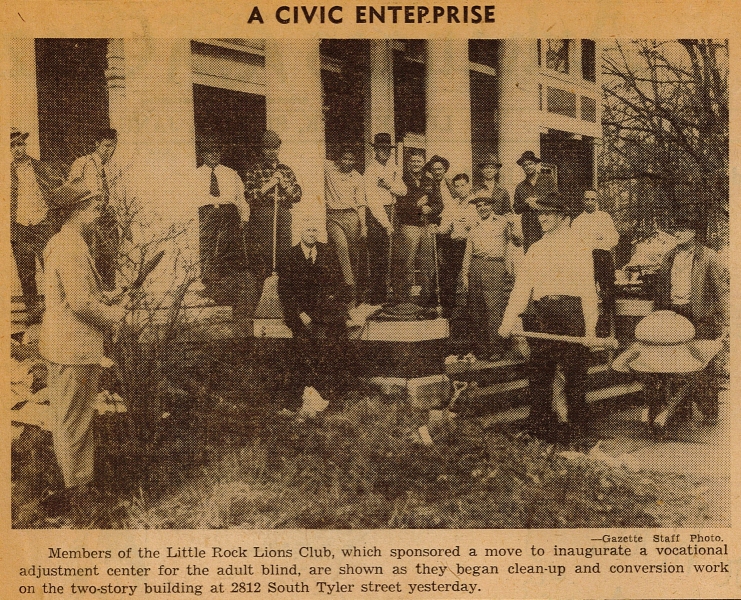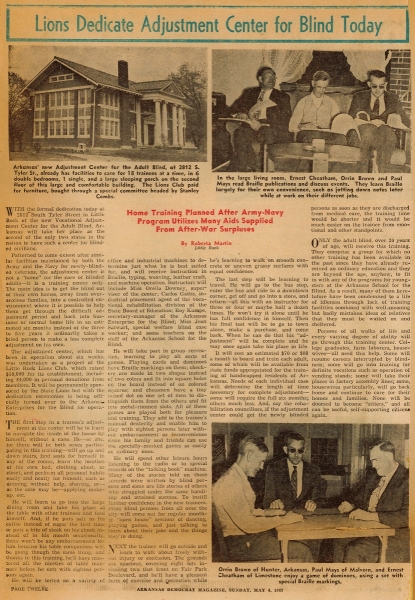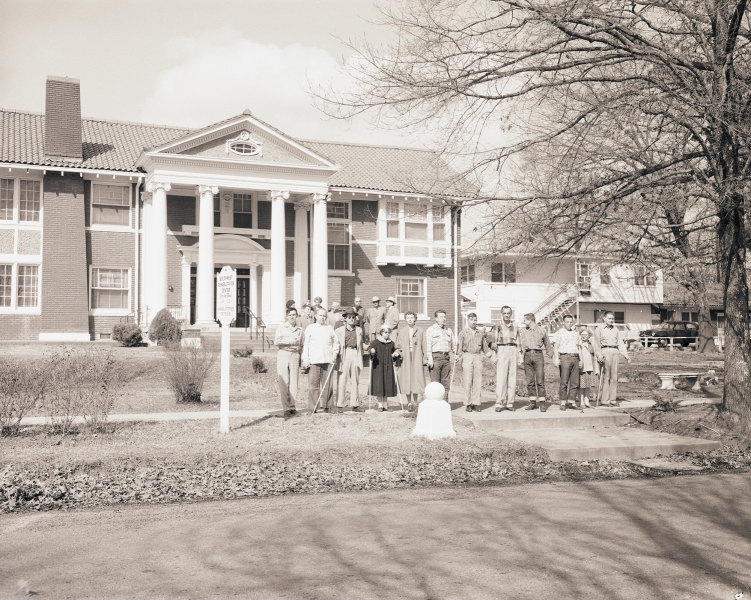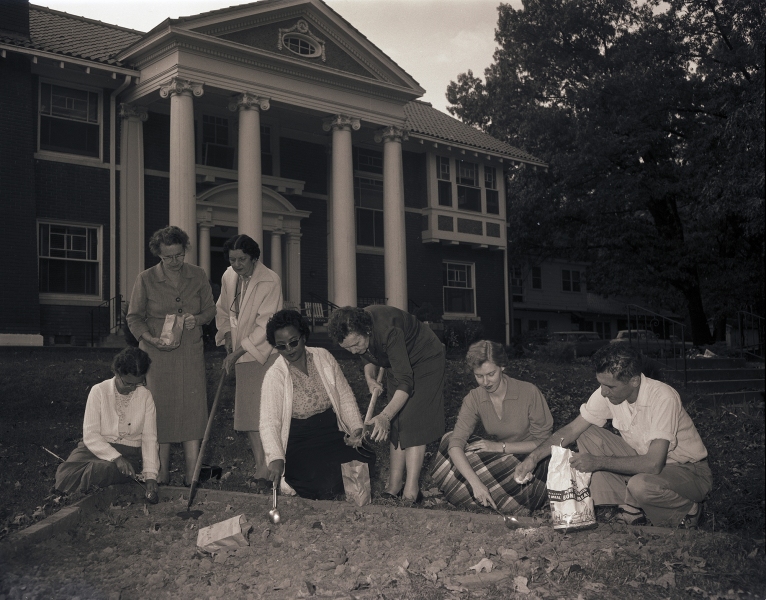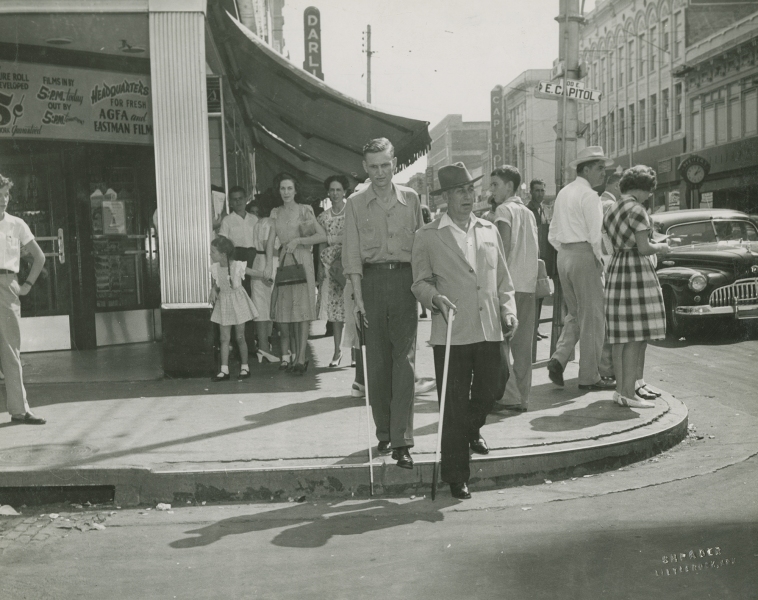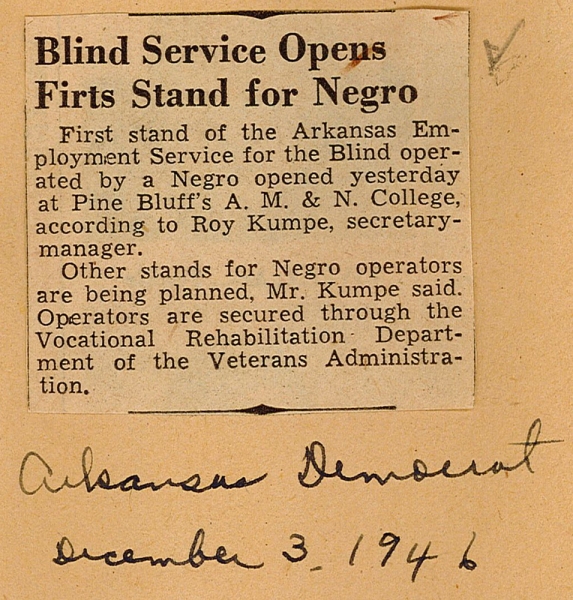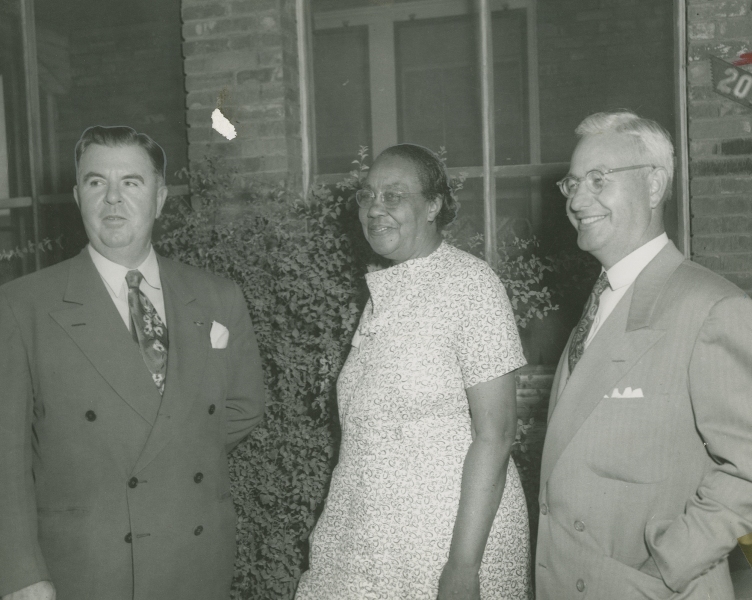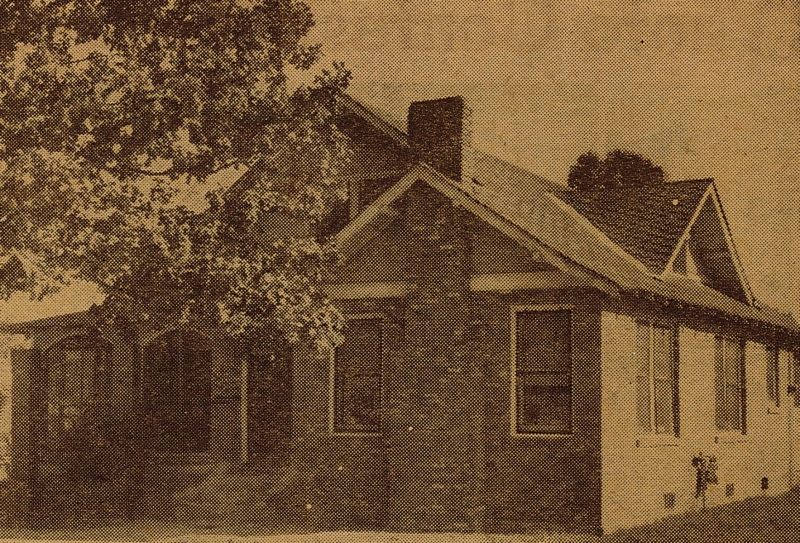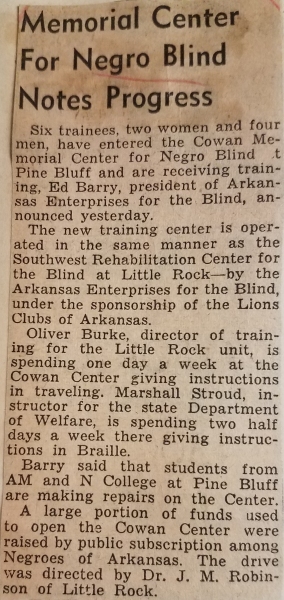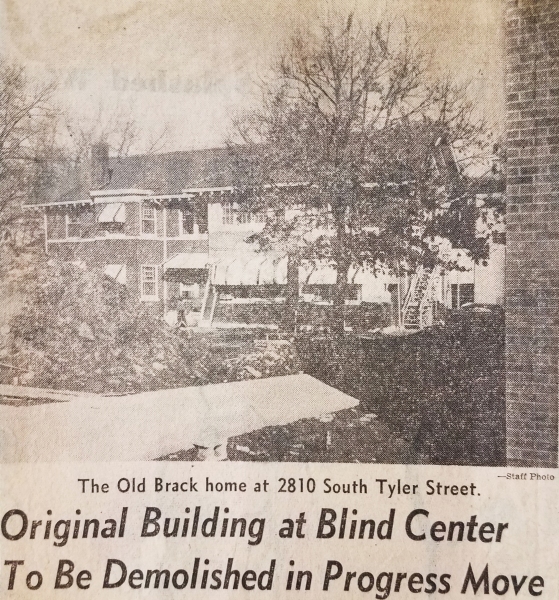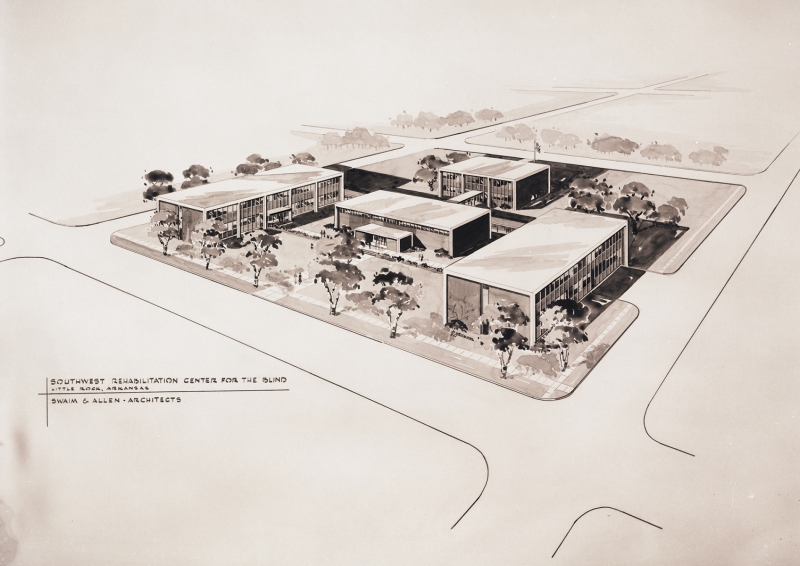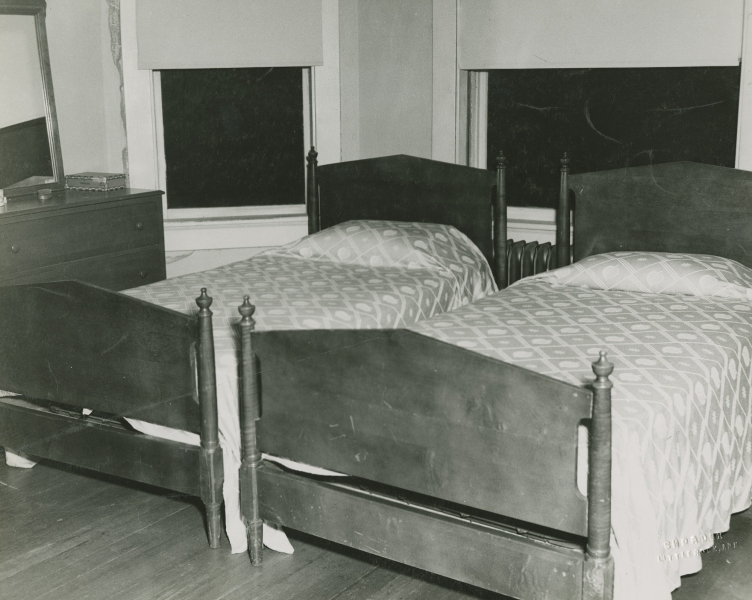LEARN MORE
The Campus
⠠⠞⠓⠑ ⠠⠉⠁⠍⠏⠥⠎
Over seventy-five years, the campus of World Services for the Blind grew from being a single mansion to six buildings covering an entire city block. Despite these changes, its mission remained the same: to provide a place where blind individuals could regain their independence.
By: Eric Yarberry
The Brack Home
In fall 1946, Roy Kumpe and the Lions Club members spent months searching for places willing to let them rent residential space within walking distance of downtown Little Rock to house the future blind rehabilitation center. However, nobody wanted to rent property because of the post-World War II rent controls. Since fundraising efforts did not yield enough to purchase a residence, it forced them to search beyond downtown. However, to offer comparable orientation and mobility and independent travel training, the location needed to be on the bus line with direct access to downtown.
Their searches brought the group to the Oak Forest neighborhood. Amid the sprawling farmland and residential housing, they found the Brack Home, seated between South Tyler Street and Fair Park Boulevard. This two-story, seventeen room mansion was located directly on a bus line and only a few miles away from attractions such as the Little Rock Zoo and the Fair Park grounds. During World War II, the mansion had served as the federal government’s research and business office for mining Bauxite, but it was no longer being used. After negotiations, Mr. W. R. Davis, the owner of the Brack Home, agreed to rent it for $250 a month for one year with an opportunity to purchase the property for $35,000. Through the overgrown landscaping and dusty windows, Kumpe’s vision was taking on new life.
On Saturday, January 25, 1947, fifty members of the Little Rock Founders Lions Club arrived to clean up the abandoned mansion. Over the next few months, they turned the house into a home. That spring, the first trainee arrived, and the Prevocational Adjustment Center for the Adult Blind was formally dedicated on May 4, 1947.
Segregated Facilities
To serve blind Black Arkansans, Kumpe worked with Viola Lee, a retired school teacher, to establish a separate rehabilitation center in Pine Bluff, Arkansas. In 1952, Lee donated her home at 2020 Reeker Street to house the center. She served as the first supervisor of the Cowan Memorial Center for the Negro Blind, named in honor of her parents.
Despite starting a separate rehabilitation center, the Southwest Rehabilitation Center struggled with racial discrimination within the Oak Forest neighborhood. One specific instance occurred when a visually impaired trainee from Guam began her orientation and mobility lessons in the neighborhood. The neighbors became outraged that the center would train a Black client. However, once Kumpe notified the neighbors that the trainee was in fact an international student, the complaints stopped. With the desegregation of Little Rock’s public buildings in the early 1960s, the rehabilitation center also integrated, and the Cowan Center stopped operations.
First Expansion
The campus grew rapidly during the 1960s and 1970s through funding from two capital improvement campaigns. In 1959, the center expanded its land holdings to an entire city block by buying the surrounding properties from its neighbors. This layout created an ideal space where the newly blind could navigate campus and not have to cross streets without training.
From 1960 to 1963, the center tore down the Brack Home and constructed a women’s dorm, a men’s dorm, an administration building, and a training space. These buildings were later named Pinkerton Hall, Kumpe Hall, Odom Building, and Barry Building, respectively. Sakon Hall, which housed the cafeteria and additional dorm space, was finished in 1969.
Expansion Map
Move the slider to see how the campus changed during its first expansion period in 1961.
Second Expansion
In June 1974, Kumpe initiated a second expansion campaign, aiming for one million dollars to implement a three-phase building program. The center presented their plan to Governor David Pryor, and he signed Act 172 of the Arkansas legislature in 1975. This act appropriated a quarter of a million dollars to the center’s expansion campaign. With these state funds, the center met its million-dollar goal and in 1977 built Fowler Hall, which included more dorm space and training space.
Beauregard the Lion
After hearing about the campus construction project, Winnie Auten offered to sell her three-thousand pound marble lion statue to the center. Auten’s father had bought it in 1920 during his trip to Italy. Byrl Byles, president of the Arkansas Enterprises for the Blind (AEB) Board of Directors and an Arkansas Lions Club member, purchased the statue in 1963 and gave it to the center. The lion statue quickly became the unofficial trademark of the center and was named Beauregard by the trainees. The lion continues to stand watch over the campus as trainees continue to learn how to live independently.
Current Campus Map
Click on the icons to learn more about each building on the World Services for the Blind campus.
Sources
“A Lesson in Living.” The Lion, March 1955. http://history.ohiolions.org/PIPLCI/obituarys/Cameron.pdf.
“About Us: History.” University of Arkansas at Little Rock. Accessed July 9, 2022. https://ualr.edu/about/history/.
Dickerson, Larry R., and Larry Morgan. “World Services for the Blind.” Encyclopedia of Arkansas. Central Arkansas Library System. Last modified January 25, 2022. https://encyclopediaofarkansas.net/entries/world-services-for-the-blind-4697/.
Fetter, Daniel K. “The Home Front: Rent control and the rapid wartime increase in home ownership.” National Bureau of Economic Research, working paper 19604 (October 2013): 1-50. https://www.nber.org/system/files/working_papers/w19604/w19604.pdf.
Kumpe, Roy, and Jim Lester. The Lion’s Share: A History of Arkansas Enterprises for the Blind. Little Rock: Rose Publishing Company, 1983.
“Past International President: Dr. James M. Fowler.” The Lion, July/August 2006. http://www.olptc.org/PIP/obits/Fowler.pdf.
Roy Kumpe papers, UALR.MS.0087, UA Little Rock Center for Arkansas History and Culture, Little Rock, AR.
About the Author
Eric Yarberry is the Director of Education and Training at World Services for the Blind. At WSB, Eric oversees the instruction and implementation of the career training, life skills, and transition-aged youth programs. He graduated from the University of Arkansas at Little Rock with a Bachelor’s in English and a Master’s in Professional and Technical Writing. He enjoys volunteering his time to the Arkansas Association for Education and Rehabilitation for the Blind and Visually Impaired, the Little Rock Founders Lions Club, Penny Forward, and the Arkansas School for the Blind Alumni Association.

